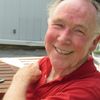
In 1988 a documentary film about the story of a man convicted and sentenced to life in prison in Texas for a murder he did not commit enabled true justice to be served -- Randall Dale Adams was released from jail a year later after attention was drawn to his case and it was reviewed.
The riveting quote (and title of the movie) came from the prosecutor in his closing argument at the original trial in which he likened the police as being the "thin blue line" separating society from 'anarchy.'"
Putting hyperbole and a flair for a good one-liner aside, if this was and is true of our police force, there is a thinner -- and even more important -- line that is endangered: the men in blue standing between their fellow officers and the citizen/activist. And yet, it was a member of this thin blue line who caused the arrest and enabled the wrong conviction.
"Occupy Wall Street" is ground-zero in this paradigm, as is the New York City Police Department.
There is sufficient video and news coverage to indict this city's police for being at best more the "thin-skinned" blue line, and being at worst lawbreakers themselves. In spite of this evidence, can there be more than one soft heart that beats behind those flak-jacketed vests? Are there, among the scores of officers who beat, kettled, maced and dragged protestors off to the black vans, any who felt that they just might be on the wrong side of history -- if not the law?
Fortunately for the NYPD, in the middle of all this they did chance upon an excellent model after which to pattern themselves: retired Philadelphia police captain Ray Lewis.
Unfortunately for the NYPD, they chose to arrest him instead when he stood peacefully protesting with other fellow-citizens at a Wall Street demonstration shortly after Zuccotti Park was raided.
You may have seen news pictures of him seated on a New York City sidewalk in dress blues and handcuffs, or read about him in a number of national and international newspaper and magazine articles about him. Coverage, incidentally, which caused a clear ripple of anger throughout his fraternal community.
"Turncoat!" "Traitor." Fingers were pounded into his chest and warnings were whispered in his ear.
His activities on behalf of Wall Street protests was neither welcomed nor sanctioned by his tight community. He received a letter from his department condemning his activities while in uniform. Heads at the Fraternal Order of Police - a "union" which ostensibly protects the rights of their members - threatened to find ways to yank his pension after 24 years of service.
Why?
Is Ray Lewis a renegade, or does he embody the characteristics of the "true American" that people think about when we picture "common" people in history who have stood up against powerful forces?
As the constitution clearly allows for free assembly, free association and free speech, how can it be that the police - people we expect to serve the constitution - are not lining up on the other side of those protective steel fences that they put up. You know, the ones used to "protect" NYC residents from their...fellow citizens?
In a brief, but in-depth interview on WGRNradio.com's "15 Minutes of Fact," Ray goes into detail as to why he did what he did, why he would do it again, and why more police officers should -- if you can believe this -- "question authority."
This doesn't happen easily in a command-and-control environment found in the typical precinct.
Should "to serve and protect" also include "to serve and protest?"
If we look around our largest cities and we see the militarization - literally - of our police departments, the need to bolster the "thinnest blue line" is going to become an imperative if we are going to maintain the proper balance between law enforcement and civil rights.
Even at the micro-level, it would appear that the purpose of the police is to harass and to intimidate -- definitely in the case of the protestor. It gets even more sinister when it is applied to occupiers who are also artists and attempt to sell their art, such as David Everitt-Carlson.
Even though the creation and sales of sidewalk art cannot be restricted (free speech combined with successful lawsuits), if the art addresses anything "political," the summons and tickets abound.
"The role of police in managing protest movements is coming to an important juncture," Ray Lewis declares. "At what point do they stop being civil servants and start being illegitimate oppressors of free speech and rightful assembly?"
He sympathizes with the difficulties involved in an officer standing up to police higher-ups, and knows that he is also being used as an "example" to keep such occurrences down.
"When they come out and say what I'm doing is illegal or improper and give me an order to immediately cease and desist wearing my uniform... or they will take any and all unnecessary action to stop me... it sends the message to officers that they can violate people's First Amendment rights," he says.
Which, by extension, also means that police cannot exercise these rights themselves.
If the Boys in Blue want to keep that positive color instead of being seen as "Bullies in Black," they -- and the authorities to whom they answer -- will need to do some real soul searching when it comes to their actions in managing protestors in the Occupy Movement -- or protestors in any movement, for that matter.
Want to connect personally with Ray on this? He can be reached on Facebook as Captain Ray Lewis.
